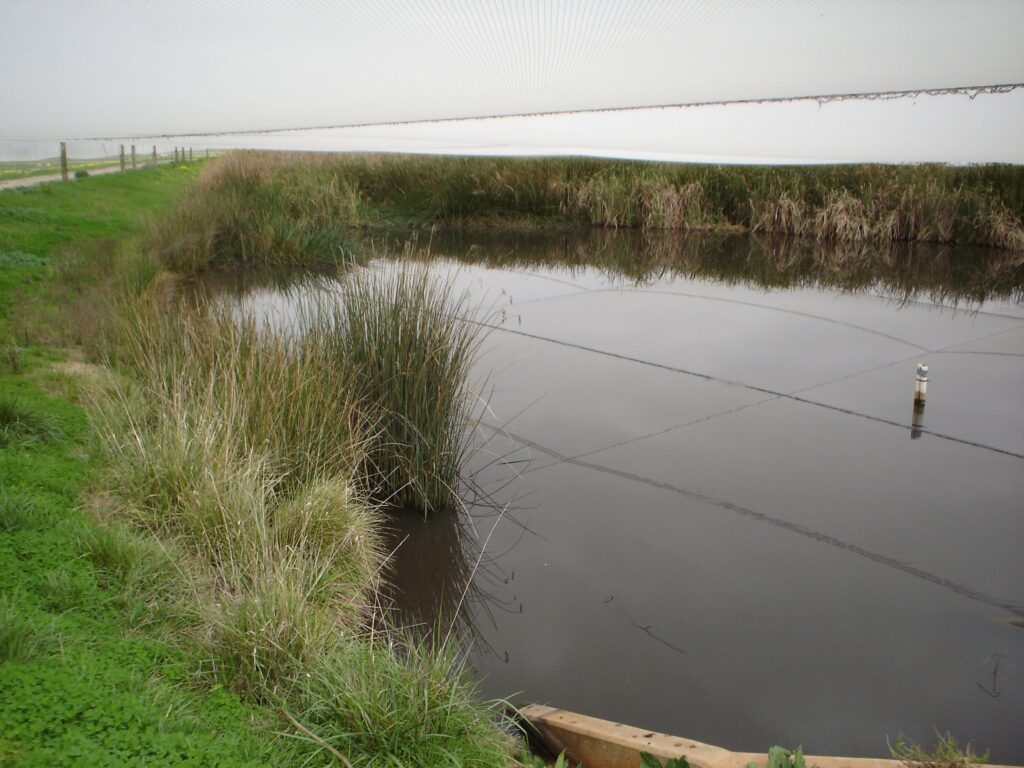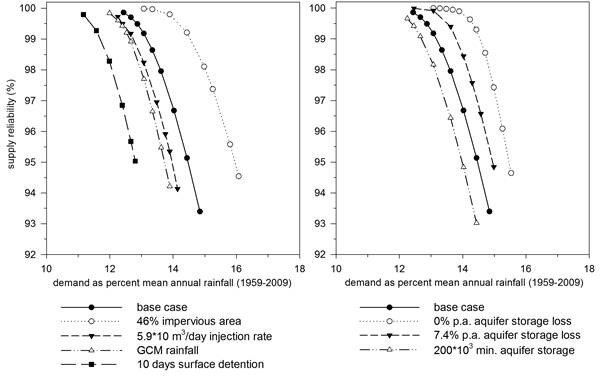
Recent research shows stormwater harvesting with Managed Aquifer Recharge (MAR) and complementary treatment can deliver safe potable water supplies and can be a cost effective solution to match supply with demand (Dillon et al 2014). In a drying climate, the yields of urban catchments will diminish only marginally in comparison with decline in yields in rural catchments, and stormwater would provide a more dependable supplementary supply if systems were connected.
The Managed Aquifer Recharge for Stormwater Use Option (MARSUO) project compared Parafield stormwater quality with other urban sites where stormwater is used, or has been assessed for use, as drinking water supplies. Australian sites were in: Orange, NSW; Mount Gambier, SA; and Brisbane, Queensland. International data were from: Singapore, Jinan, (China), Haridwar, (India) and International Stormwater Best Management Practices (BMP) Database (2010). The evaluated stormwater quality data from all catchments, although variable, were surprisingly similar from a risk assessment perspective for drinking water supplies, requiring treatment for removal of pathogens, iron, turbidity and colour in all cases.
An economic analysis was undertaken for twelve configurations for stormwater uses at Parafield, four each for public open space irrigation, 3rd pipe non-potable household supplies and drinking water supplies. The cost of additional treatment and water management was found to be less than the cost of constructing a new water distribution system for non-potable household supply and keeping it isolated from existing water mains. Treatment costs were found to be similar to those for the production of drinking water from reservoirs in open catchments. In general the public open space irrigation and drinking water supplies had similar all inclusive levelised costs (from $1.31 and $1.47/KL respectively) and 3rd pipe non-potable supplies were considerably more expensive (from $2.74/KL), and if retrofitting to existing subdivisions costs rose by a further $1.70/KL. These costs depend on estimated values and actual costs will vary from site to site.
An evaluation of biofilm and sediment formation in pipes of different materials was undertaken for water derived from drinking water mains with low chlorine residual and undisinfected stormwater to assess the likelihood of water quality changes and impacts on infrastructure maintenance for non-potable distribution systems. Iron content in source water and biofilm growth in infrastructure were the two major impacts that require control. Results suggest that costs of maintenance and risk management may be marginally higher than for mains water systems due to potential for increased biofilm growth in pipes.
So can we actively pursue stormwater as a source to supplement traditional supplies for potable use? If the participants of focus groups and on-line surveys for the MARSUO project are representative of the wider community then the door to this conversation should be open. The majority of those surveyed indicated that both 3rd pipe non-potable (60.1% ) and potable (66.1%) options for stormwater use were acceptable. Any pursuit of the harvesting of stormwater for potable use or residential non-potable use would require appropriate community education and consultation programs.
From a national perspective the MARSUO project demonstrates the utility of stormwater for a wide range of future uses. It suggests that drinking water uses can be considered in addition to public open space and industrial use as well as 3rd pipe supplies, in line with the National Water Initiative principle that all sources of water should be considered for future drinking water supplies.
Stormwater harvested by the City of Salisbury from the Parafield wetlands and aquifer storage and recovery (ASR) scheme provides water for irrigation of public open space, industrial water supplies and to dilute the salinity of non-potable supply to households throughout the suburb of Mawson Lakes. The MARSUO project has investigated the current challenges to the adoption of stormwater from this site as a source to augment potable supply and mounts a convincing case to pursue stormwater as a safe, reliable and cost effective supplementary potable supply option.
This article is sourced and adapted from” Dillon P, Page D, Dandy G, Leonard R, Tjandraatmadja G, Vanderzalm J, Rouse K, Barry K, Gonzalez D and Myers B (2014) Managed aquifer recharge stormwater use options: Summary of research findings. Goyder Institute for Water Research, Technical Report 14/13. http://goyderinstitute.org/index.php?id=20
In addition, a recent paper on the reliability of stormwater supplies has been published and the complete paper is available to purchase from the ScienceDirect website.
Clark R, Gonzalez D, Dillon P, Charles S, Cresswell D and Naumann B. (2015) Reliability of water supply from stormwater harvesting and managed aquifer recharge with a brackish aquifer in an urbanising catchment and changing climate. Environmental Modelling & Software 72, pp. 117-125
Supply reliability curves for modelled scenarios (mean annual rainfall 460mm) (Clark et al 2015).






